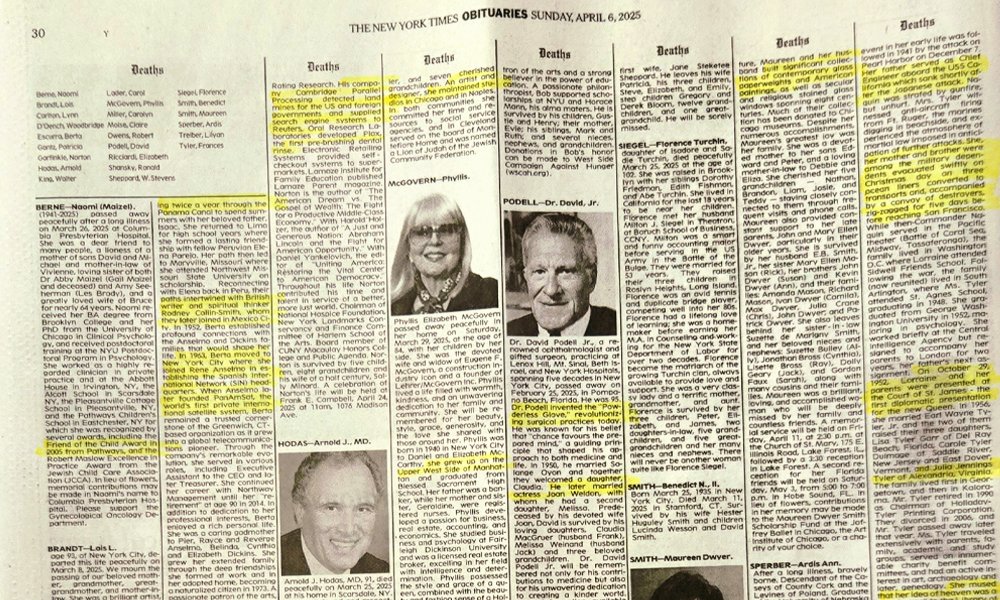The Creativity Hack No One Told You About: Read the Obits
I've been reading obituaries for as long as I can remember. At first glance, they might seem like little more than a collection of factual information about people who have passed away. But to me, they're so much more. They're a treasure trove of fascinating stories, unexpected connections, and surprising insights that can help fuel our creativity.
Most of us stick to what we know, but the obituaries in the New York Times Sunday edition are an ideal way to broaden our horizons and boost our creative thinking. These small-print obituaries may not be about famous people or celebrities, but they're often more interesting than any headline obituary. And that's exactly why I think we should read them.
The key is to approach the obituaries without searching for a big idea or trying to find connections between them. Instead, let the details wash over you – the places lived, the professions practiced, the odd hobbies pursued. Notice what sticks. It's not just about learning new facts; it's about asking questions.
Why was a British mystic in Mexico City? How did Spanish-language television evolve in the U.S.? What led someone to invent PLAX or build search tools for financial news decades before Google? Even if you don't find all the answers, just posing these questions helps you flex your creative muscle that thrives on curiosity and connection.
The Power of Distant Analogies
Research shows that distant analogies often lead to creative breakthroughs, often in unexpected ways. By filling up our brain with a range of very different cognitive material, we can start to see connections between seemingly unrelated things.
In every person's life story, there's always a narrative, always a deeper principle at work. How did a woman from Peru get to Scotland, Mexico City, and then New York? How does a professor at Amherst College found so many different companies, with so many different technologies and within so many industries?
Seek that deeper principle, ask "Why?", and look for distant connections with your own life. Creativity is a daily practice available to anyone.
The Benefits of Reading Obituaries
So why should you read the obituaries in the New York Times Sunday edition? Here are just a few reasons:
- They offer a chance to learn about people and events that might otherwise go unnoticed.
- They can help you broaden your horizons and expand your knowledge.
- They provide a unique opportunity to practice your creative thinking skills.
- They're a great way to get out of your comfort zone and challenge yourself in new ways.
A Creative Cognition Practice
So how can you start using obituaries to enhance your creative cognition? Here's a simple practice:
- Start by reading the obituaries slowly, without searching for a big idea or trying to find connections between them.
- Let the details wash over you – notice what sticks and ask yourself questions about each person's life story.
- Pose these questions in your mind and see if any creative insights arise.
- Seek out distant analogies and look for connections between seemingly unrelated things.
About the Author
This article was written by [Your Name]. Keith Sawyer is one of the world's leading creativity researchers, with over 20 books to his name. He is currently the Morgan Distinguished Professor in Educational Innovations at the University of North Carolina at Chapel Hill.
